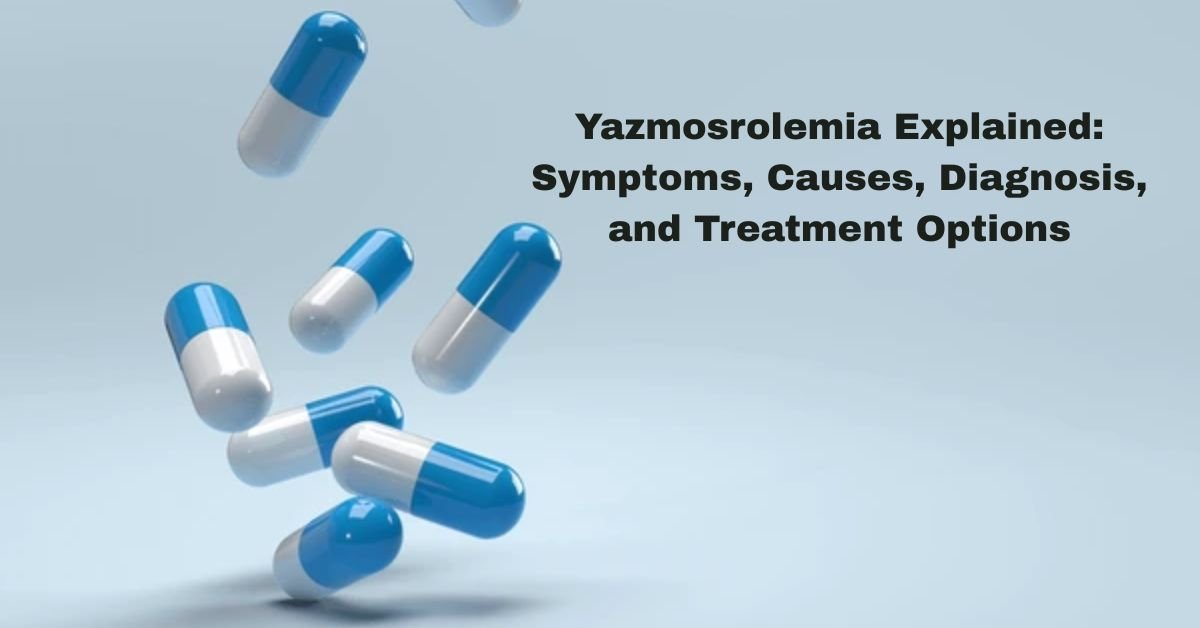What is Yazmosrolemia?
yazmosrolemia is a term that encapsulates a complex interplay of factors influencing human experiences, particularly in the realms of psychology and sociology. Although the term may not be widely recognized, its origins can be traced back to various scholarly discussions regarding emotional well-being and social dynamics. In modern contexts, yazmosrolemia serves as a conceptual framework that helps in understanding individual and collective behavior.
The significance of yazmosrolemia has gained traction in recent years, especially among researchers aiming to dissect the nuances of mental health and interpersonal relationships. By examining the emotional constructs associated with yazmosrolemia, therapists and practitioners can better tailor their approaches to treatment, as an individual’s emotional state can substantially affect their daily interactions and overall quality of life.
Relevant scientific research often underscores that components of yazmosrolemia include emotional resilience, coping strategies, and social support systems. These elements work in conjunction to create a holistic view of human behavior. For instance, emotional resilience—an important facet of yazmosrolemia—refers to a person’s capacity to adapt in the face of adversity, thereby enhancing their ability to connect with others and manage stress effectively.
Moreover, the integration of yazmosrolemia within cultural contexts highlights its relevance as a lens through which societal norms and values influence personal experiences. This conceptualization underscores the need for a multidisciplinary approach, merging insights from psychology, sociology, and cultural studies. In essence, understanding yazmosrolemia provides a comprehensive insight into the intricate web of relationships that define human experiences today, paving the way for further exploration and research in this essential area of study.
The Importance of Yazmosrolemia in Today’s World
In the complex landscape of contemporary society, the significance of yazmosrolemia cannot be overstated. This multifaceted concept permeates various sectors, including health, technology, and culture, reflecting its broad influence on daily life. The implications of yazmosrolemia extend beyond individual experiences to shape community dynamics and societal structures.
In healthcare, for instance, yazmosrolemia is increasingly recognized as vital in addressing mental well-being, with numerous studies linking it to improved health outcomes. Current trends indicate a growing emphasis on integrating yazmosrolemia into mental health frameworks, highlighting its role in fostering resilience and emotional intelligence. As more professionals adopt approaches centered around yazmosrolemia, the healthcare sector is better equipped to meet the complex needs of patients, paving the way for innovative therapeutic techniques that embrace this concept.
Technology is another sphere where yazmosrolemia is making waves. The rise of social media platforms and digital communication tools has prompted a deeper examination of how yazmosrolemia influences relationships and interactions among individuals. As people increasingly rely on technology to connect, understanding the principles of yazmosrolemia becomes essential. Engineers and designers are now prioritizing yazmosrolemia in the development of user interfaces, ensuring that technology fosters positive user experiences and community engagement.
Furthermore, the cultural significance of yazmosrolemia is evident in various forms of art, literature, and social movements. Cultural expressions that embrace and reflect yazmosrolemia often resonate deeply with individuals, creating a sense of belonging and shared identity. Presently, numerous authors and artists are exploring themes of yazmosrolemia, promoting dialogue that bridges differences and nurtures understanding among diverse groups.
Overall, the relevance of yazmosrolemia in today’s world cannot be ignored. Its impact resonates deeply across numerous sectors, demonstrating that the principles behind yazmosrolemia are fundamental in addressing contemporary challenges and fostering a more interconnected society.

Challenges and Controversies Surrounding Yazmosrolemia
Yazmosrolemia, while a subject of considerable interest within both medical and scientific fields, presents a host of challenges and controversies. One of the most significant barriers to understanding yazmosrolemia is the pervasive misinformation that exists in public discourse. The complexity of the condition often leads to misinterpretations and oversimplifications, which can result in confusion among patients, practitioners, and the general public. Furthermore, the rapid spread of information, particularly through social media, can exacerbate misunderstandings. This proliferation of unverified content can distort the actual nuances associated with yazmosrolemia, leading individuals to form opinions based on inaccurate details.
The differing opinions in the scientific community add another layer of complexity to the discourse surrounding yazmosrolemia. Researchers and clinicians may hold varied interpretations regarding its etiology, symptomatology, and treatment protocols. This divergence stems from ongoing research, contrasting clinical experiences, and the evolving nature of medical knowledge. Such disagreements can create a divide that hinders collaborative efforts toward a unified understanding of the condition. For patients, this may translate to receiving conflicting insights from different healthcare professionals, which can complicate treatment decisions and overall management.
Additionally, practical challenges exist for those studying or deeply affected by yazmosrolemia. Researchers often encounter difficulties in accessing sufficient data or subjects for clinical studies due to the rarity or variability of the condition. This limitation not only hampers the advancement of knowledge but can also delay the development of effective interventions. Patients themselves may confront obstacles such as limited access to specialized care or resources. Hence, addressing these challenges requires a concerted effort from the scientific community, healthcare providers, and patient advocates to drive forward a comprehensive understanding of yazmosrolemia.
Future Perspectives on Yazmosrolemia
The future of yazmosrolemia presents numerous opportunities for research and development that could significantly enhance our understanding and management of this condition. As researchers delve deeper into the underlying mechanisms of yazmosrolemia, advances in genetic studies and molecular biology are likely to reveal new insights. This could lead to the identification of biomarkers, which might enable earlier diagnosis and tailored therapeutic approaches to improve patient outcomes.
Additionally, the rise of artificial intelligence and machine learning within medical research has the potential to revolutionize how we approach yazmosrolemia. These technologies can analyze vast datasets, identifying patterns and correlations that may have otherwise gone unnoticed. As AI tools become more sophisticated and accessible, researchers could more rapidly innovate diagnostic methods and treatment strategies that are optimized for individual patients.
Communities and individuals also have a vital role in shaping the future landscape of yazmosrolemia awareness and management. Advocacy groups can provide valuable platforms for sharing knowledge, facilitating research funding, and promoting community participation in clinical studies. Furthermore, individuals living with yazmosrolemia can contribute by participating in surveys, clinical trials, or forums that discuss both challenges and successes in their journeys. This collective voice is crucial for influencing policy-making and healthcare practices, ensuring that the needs of those affected by yazmosrolemia are addressed.
For those interested in further involvement, numerous resources are available. Online platforms host educational webinars, support groups, and informational articles focused on yazmosrolemia. Engaging with these resources not only enriches personal understanding but also fosters a sense of community among those impacted by the condition. By prioritizing education and collaboration, we can pave the way toward a future characterized by increased knowledge and improved outcomes for yazmosrolemia.

Leave a Reply